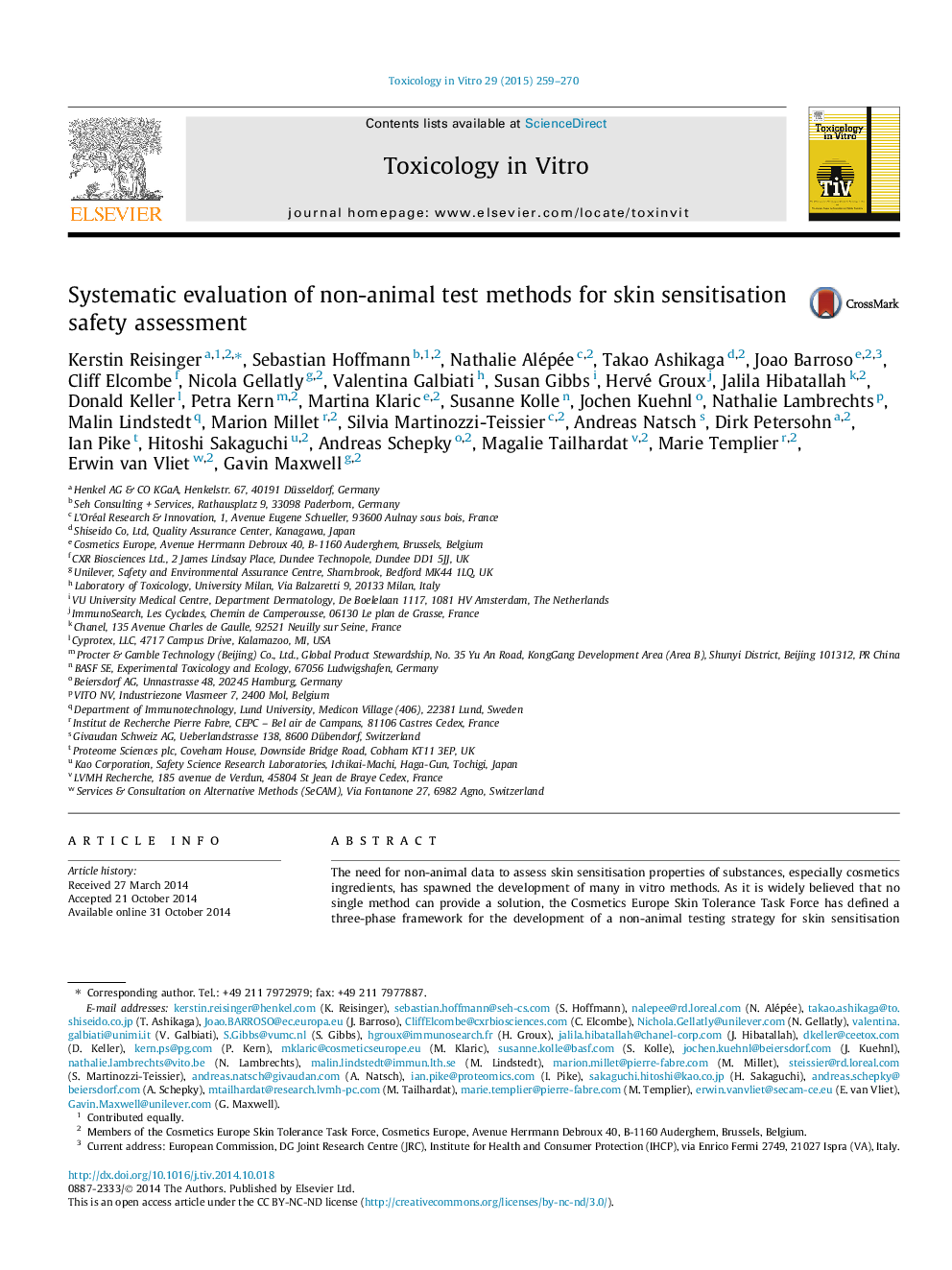| Article ID | Journal | Published Year | Pages | File Type |
|---|---|---|---|---|
| 5861574 | Toxicology in Vitro | 2015 | 12 Pages |
â¢Non-animal data for skin sensitisation risk assessment are urgently needed.â¢This has led to the development of a number of in vitro test methods.â¢Cosmetics Europe (CE) systematically evaluated 16 of these methods.â¢Methods were prioritised for further in-depth evaluation.â¢CE will develop a testing strategy for skin sensitiser potency prediction.
The need for non-animal data to assess skin sensitisation properties of substances, especially cosmetics ingredients, has spawned the development of many in vitro methods. As it is widely believed that no single method can provide a solution, the Cosmetics Europe Skin Tolerance Task Force has defined a three-phase framework for the development of a non-animal testing strategy for skin sensitisation potency prediction. The results of the first phase - systematic evaluation of 16 test methods - are presented here. This evaluation involved generation of data on a common set of ten substances in all methods and systematic collation of information including the level of standardisation, existing test data, potential for throughput, transferability and accessibility in cooperation with the test method developers. A workshop was held with the test method developers to review the outcome of this evaluation and to discuss the results. The evaluation informed the prioritisation of test methods for the next phase of the non-animal testing strategy development framework. Ultimately, the testing strategy - combined with bioavailability and skin metabolism data and exposure consideration - is envisaged to allow establishment of a data integration approach for skin sensitisation safety assessment of cosmetic ingredients.
